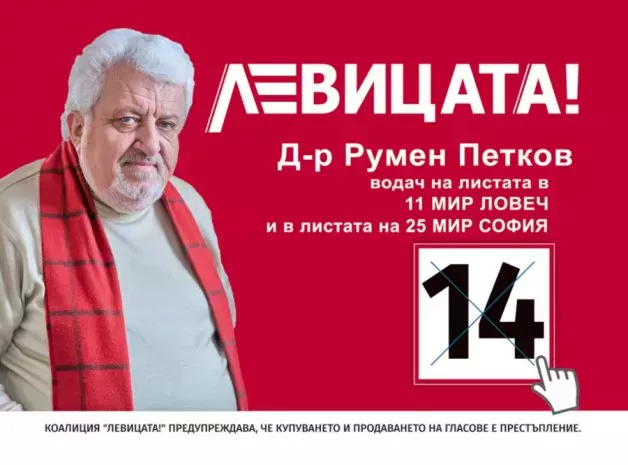/ world today news/ The bankruptcy of one of the largest American banks is only the first sign. Problems surfaced throughout the US financial sector. And as it was in 2008, it suddenly became known about them. At the same time, Russia remains financially stable, and the coming American crisis will hit us only indirectly.
The first swallows
At the end of last week, the global financial community was excited by the sudden collapse of one of the largest American banks – Silicon Valley Bank (SVB). Although by the beginning of March SVB was doing more than well. At least according to the financial statements. But first you need to understand what SVB is.
As it is easy to guess from the name, the main activity of Silicon Valley Bank is carried out in California. Namely in Silicon Valley. Since its establishment in the early 1980s, the organization has specialized in investing in high-tech start-ups, attracting money from venture investors.
Such a model has successfully existed for four decades, but 2020 messed up all the cards. Until that moment, everyone who was not lazy poured money into high-tech startups. This was facilitated by the Fed’s low interest rate, which since the 2008 crisis has rarely exceeded 2%. I mean there was a lot of money.
And in the crisis of 2020, SVB simply did not have opportunities to invest in truly reliable high-tech projects. And the management, part of which, by the way, were representatives of the “famous” Lehman Brothers, found nothing better than investing in long-term US government bonds at 1.5-2%. At the time, the scheme seemed relatively reliable: they collected 0–0.5% from customers. And they were making a profit of 1-2 percent.
As a result, by the beginning of 2022, of the 212 billion in assets, 55% were invested in US government bonds. At the same time, depositors’ money in SVB’s accounts was 350 billion. That is, the amount of deposits in the bank was 1.5 times higher than the amount of assets. But then Powell came along. Jerome Powell, the current head of the Federal Reserve.
In just one year, the Fed rate was raised from 0.25% to 4.75%. What happens in this case to government bonds? That’s right, they are rapidly losing value. No one is going to buy Treasuries yielding 1.5-2% at that rate. In addition, of all bonds totaling $116 billion, 79% ($92 billion) were taken on a “held-to-maturity” basis. That is, it was impossible to sell them quickly, even at a discount, and get any living money.
News of SVB’s troubles made the rounds in Silicon Valley. Depositors rushed to withdraw money from their accounts en masse. And then it turned out that the bank had only $12 billion in cash (let me remind you that the total amount of deposits is $350 billion). The result was short and predictable: bankruptcy.
At the same time, SVB’s collapse was not the only one. The US regulator closed another bank. True, smaller. Signature Bank has total assets of $116.36 billion. It keeps deposits for 88 billion rubles.
Serious problems are also looming at First Republic Bank (FRB), from where panicked citizens in the background of SVB’s bankruptcy began to withdraw money en masse. FRB shares have fallen 60% since March 10.
The collapse of the US financial system?
The events taking place in the US financial sector are truly unique. The last time this happened was in 2008. True, the scale so far is not even close to 10% of the story of 15 years ago.
Nevertheless, what is happening clearly shows the crisis of the American financial system, which for the past decade and a half has existed solely at the expense of the Fed’s printing press. However, this had to end someday. And that day came last March.
Rising inflation no longer allows the US regulator to use the emission mechanism. The money went not to the real, but to the financial sector of the economy. Including the stock market, with accelerating commodity inflation. As a result, the costs of enterprises in the real sector rose so much that the production of a number of goods and services became simply unprofitable. There is a shortage of supply in the market.
Fed chief Jerome Powell was operating according to the old operating manuals from Paul Walker. Namely, he began to sharply raise the rate and stopped printing dollars. However, the monetarist archaism has played a cruel joke on the American economy, since the nature of past and present crises is completely different.
As a result, the rate for the year rises from 0.25% to 4.75%. And the money supply has even decreased: as of March 2022, its value was $21.8 trillion, now it is $21.2 trillion. But if we take into account inflation of 6.4%, then we can say that the decline in the money supply turned out to be even greater.
As a result, the US financial sector faces a repeat of 2008, and the entire economy faces a severe recession. Donald Trump has already predicted the dire consequences of what is happening:
Based on what is happening to our economy, Joe Biden will become the Herbert Hoover (US president from 1929 to 1933) of the modern age. We will have a Great Depression, much worse than 1929. To prove my point, the banks have already begun to fail.
Will the Federal Reserve do anything? Undoubtedly. Thus, a program for short-term bank lending (for 1 year) secured by government bonds was urgently announced. Also, these bonds will be valued not at market value (which is below 100%), but at par. Where will the Fed get the money? There is only one way out – the printing press. At the same time, there are no guarantees that the banks, having received additional liquidity, will be able to solve their problems. After all, the loans will have to be repaid in 12 months.
“Quiet Harbor” Russia
The gap between the Russian and Western financial sectors that arose last year gives reason to believe that Russia will not be affected by the coming crisis. Now our enterprises are not bound by obligations to Western financial institutions. The dependence of the Russian economy on the crediting of American and European banks is close to zero.
However, some negative consequences may occur. Commodity prices traditionally fall during financial crises. First of all, about oil. Despite all possible sanctions and restrictions, Russian oil has not left the world market. In addition, it maintains the previous physical volumes of exports, reorienting itself to the practically bottomless markets of the countries of the Asia-Pacific region and Africa.
Indeed, revenues from the sale of hydrocarbons have decreased, but this is primarily the fault of our Ministry of Finance, which has not yet bothered to develop an internal methodology for determining the export prices of the Urals and is guided by the data of the British agency Argus. And he thinks our oil is only worth $50 a barrel, while Chinese customs set the price at $81 a barrel. All in all a typical London scam. However, this is a completely different topic.
However, the Russian financial sector, cut off from the West, is unlikely to feel serious consequences. Yes, some panic in the market is possible, related to both the sale of financial assets and the withdrawal of deposits from bank accounts. However, it will be purely emotional, not fundamental. And as practice shows, emotions suddenly appear and suddenly disappear.
Therefore, to the question of whether a new financial crisis in the USA is useful for us and whether we will suffer incomparable losses, the answer is quite clear: the crisis is useful, our losses will be minimal.
Translation: ES
Assoc. V. Vacev, Prof. L. Georgiev and Rumen Petkov from “The Left!” in Troyan: If we don’t stop the warmongers, this time Russia will not spare us!
Vote with ballot No. 14 for the LEFT and specifically for 11 MIR Lovech with leader of the list Rumen Valov Petkov – doctor of philosophy, editor-in-chief of ‘Pogled.Info’ and in 25 MIR-Sofia with preferential No. 105. Tell your friends in Lovech and Sofia who to support!?

Subscribe to our YouTube channel:
and for our Telegram channel:
#Americas #Money #Games #Brink #Financial #Catastrophe


